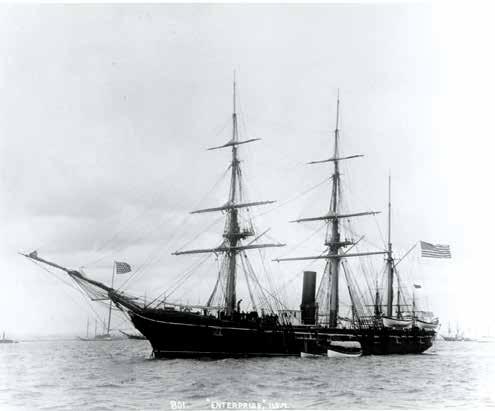
4 minute read
Yesteryear A Check Up with Coronado’s Earliest Doctors
A Check Up with Coronado’s Earliest Doctors
by Kimball Worcester
Advertisement
Public and private health stewardship in early Coronado lay in the hands of a small number of doctors and surgeons. Before World War I, the island’s prominent doctors were Raffaele Lorini and Robert Smart. In the era before antibiotics, with few vaccines—smallpox was still of concern—these doctors battled the sources and causes of affliction and death among Coronado’s visitors and residents. As president of the Board of Health for almost three decades, Lorini implored the populace to eliminate standing water against the threat of mosquito-borne disease, to link their properties to the city’s sewage system, to muzzle dogs during rabies outbreaks, to vaccinate against smallpox and diphtheria, and to wear face masks in public during the influenza pandemic of 1918–19.
Lorini was also a long-time house physician for the Hotel Del, with a short initial stint from 1892 to 1894 and returning for the years 1904 to 1929. Lorini’s 1929 memoir, published in the Journal upon his retirement, is a handy resource for those years at the hotel. In “the early years of the century,” he was sought out by guest Henry James, a noted Italophile, for “frequent conversation,” during which James “averred that he could write better at Coronado than at any other
An elegant sketch of a proposed new Coronado Hospital to be built at the corner of Orange and Cabrillo Esplanade (First Street) that was made for Dr. Arthur Wegeforth, with Louis J. Gill architect. Drawing from Coronado Journal 1925
place in the world,” according to Lorini.
Smart began his practice in Coronado in 1912 and worked until going overseas during World War I in 1917. Before coming to Coronado Smart had served as a surgeon both in the army and in the navy, on the school ships USS St. Mary’s and the fifth USS Enterprise (a sloop-of-war, 1874–1909).
Smart had his share of colorful Coronado medical experiences, including having to put down his own “beautiful setter dog” in 1914 due to rabies. By September 1918 Lt. Col. Smart was in command of U.S. Army Base Hospital, Unit 96, which arrived in France just in time for the Armistice.

Dr. Robert Smart was onboard the USS Enterprise, where he served as surgeon. Photo courtesy U.S. Naval History and Heritage Command
Smart returned to Coronado in 1919. During Smart’s war service, however, he had contracted the pandemic influenza, which ultimately led to his death from complications some years later, in 1928.
The three Wegeforth doctor brothers—Harry, Arthur, and Paul— hailed form Baltimore, where all earned their medical degrees from Johns Hopkins, and headed west in the early years of the 20th century. Harry arrived in San Diego c. 1910 and proceeded to establish both a thriving medical practice and the Zoological Society of San Diego and San Diego Zoo. A man of drive, compassion, and skill, to be sure. His brother Paul completed his medical studies in 1912, practiced in the east for a few years, then came to Coronado at Harry’s behest. Arthur followed suit in 1921.
Harry divided his time between medicine and zoology. Paul married Lillie, daughter of J.D. Spreckels, and died tragically young in 1923 while serving in the army during World War I. The prevailing Wegeforth doctor between the two wars was Arthur. He worked extensively to establish a modern hospital on the island, beginning with a small “emergency hospital” 1923 on the second floor of the First National Bank. This emergency hospital was needed especially because the ferries stopped running at midnight. He and Lorini continued to press for better facilities throughout the 1920s and ’30s.
The article in the Coronado Journal of Feb. 24, 1925 reports that “Dr. [Arthur] Wegeforth states that the new hospital is a matter of necessity.”
Residence of Dr. Raffaele Lorini, 1517 Ynez. Photo courtesy Coronado Historical Association c 1972

Note that the architect is Louis J. Gill—nephew and partner of Irving Gill—who was later contracted to design yet another Coronado hospital in the early 1940s. Perhaps it was the estimated building costs of $100,000 in 1925 that precluded this airy, elegant hospital from gracing the eastern side of the island.
Dramas large and small played out over the professional years of doctors Lorini, Smart and Wegeforth, encompassing the treatment of film star Mabel Normand for a broken collar bone in 1924, diphtheria outbreaks, and the tragedies of fatal auto crashes, to name but a few challenges. These doctors furthered the civic lives and the personal health of the islanders and their guests, creating a legacy of respect and affection.








